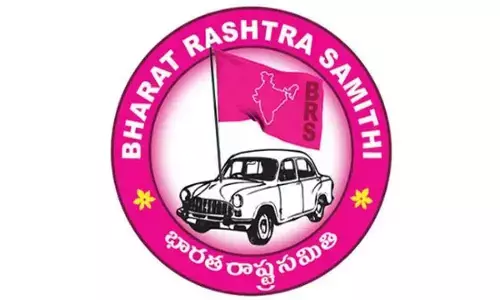Crop diversification: Lessons to learn from Odisha

Rice is the principal food crop in Odisha occupying about 63 per cent of cultivated area in kharif (37.5 lakh ha. during kharif season).
Rice is the principal food crop in Odisha occupying about 63 per cent of cultivated area in kharif (37.5 lakh ha. during kharif season). This kharif paddy area consists of 6.1 lakh ha of high land, 16.5 lakh ha of medium land and 14.9 lakh ha of low land. About 58 per cent of kharif paddy area is unirrigated.
The yield of kharif paddy was slightly less at about 2.4 ton/ha as against national average of 2.5 ton /ha. Since long, the State government is trying to diversify area under kharif-paddy to alternate crops such as pulses and oilseeds under Crop Diversification Programme (CDP) especially in high-land and drought affected medium land areas due to insufficient water in crucial stages of crop growth, which resulted in low yield with high variability.
Under the CDP, the State government is engaged in promoting pulses, oilseeds and other commercial crops by alternate crop demonstrations, farm mechanisation and value addition and site-specific activities.
If irrigation was available, farmers are promoted to grow vegetables and horticultural crops. The CDP sourced resources from multiple schemes like National Food Security Mission (NFSM), Rastriya Krishi Vikas Yojana (RKVY), submission on Farm Mechanisation and Agro-forestry to exploit synergies and complementarities. Cash and kind incentives to cultivate alternate crops have been given since early1990s.
However, in spite of good efforts since 1990s, crop diversification decreased in the State. The Economic Survey 2018 has found that crop diversification decreased in the State over the last two decades. It used an Index of Crop Diversification to examine major changes in cropping patterns.
Higher the value, greater is the diversification and vice versa. The index declined from 0.74 in 1994-95 to 0.70 in 2005-06. The year 2010-11 saw a steeper decline in the index as it fell to 0.38 and afterward to 0.34 in 2014-15. The monocrop of paddy leads to reduced profitability, lower fertilizer response ratio, decrease in soil fertility, higher exposure to price and yield risk and increased vulnerability.
Paddy consumes about 3 to 5 times (3,000 to 5,000 liters per kg grain) more water compared to pulses and oilseeds (only about 900 liters per kg grain). Policies like 24/7 free electricity to agriculture for pumping groundwater and free water supply through major irrigation systems encouraged expansion of area under paddy leading to over-exploitation of groundwater and consequent increased investment cost in digging deeper bore wells ultimately ending in huge debt and farm distress.
Studies revealed that monocrop of paddy at farm level is leading to increased severity of pests and diseases, loss in soil structure and health which reduced land productivity in the long run.
Long run stable price policy for alternate crops
From the point view of farmers, biggest advantage of paddy was getting stable yields with guaranteed procurement arrangements and Minimum Support Price (MSP) at village level. Pulses and oilseeds have potential to replace paddy in high and medium land, but in spite of intensive promotion in terms of demonstrations, providing subsidised farm machinery and seed, the scheme is not able to drive large scale crop diversification.
Costs and returns of alternative crops show that the relative profitability of these crops over a longer period fluctuated widely. This is a cumulative effect unpredictable market prices, unstable yields and lack of long run stable price policy. For example, from Triennium Average 2011-12 to TE 2015-16, net returns declined from Rs 21,114/ha to Rs 2,817/ha for cotton. During the same period, net returns increased for sesame, but decreased for niger seed, tur and moong.
These year-to-year variations in net returns are entirely unpredictable and major hindrance for crop diversification. This indicates that, policy to promote pulses, oilseeds and other alternate crops to paddy are not stable over the years, which negate crop diversification towards pulses, oilseeds and other alternate crops from paddy.
Although pulses, oilseeds and cotton fetch higher prices in a few years, they are more risky both in terms of yields and prices. In addition, higher market prices were not able to compensate low yields over a long period. Hence, to promote alternate crops to replace paddy in States like Odisha, Telangana and Andhra Pradesh, government has to implement long run stable policies to make them relatively more profitable than paddy over relatively longer period.
The prices and net returns from agriculture follow Cobweb cycle, in this wide fluctuation in prices happens owing to the farmers production and market arrivals depends on prices in previous production periods rather than the ongoing market prices due to lags in production period.
The government's long-run price policy should warn the market participants against falling into cob-web cycles. One way to do it is, announcing the MSP which will be backed by enough procurement so that the farmers trust MSP as price signal for the coming year and accordingly plan their acreage rather than falling in to cob-web cycle.
Controlled irrigation
In addition to the stable price policy, the government has to focus on development and diffusion of technologies to increase yields of alternate crops. Groundwater irrigation plays an important role in diversification of paddy, as it facilitates controlled water release which is one of the factors for growing crops like vegetables and cotton.
Due to this reason, districts with more dependent on ground water (like bore well irrigation) should be given first priority in crop diversification plans. Another priority intervention is shifting to water control systems in canal command areas to facilitate controlled release of water as per the crop needs from the current practice of flooding the entire area. This controlled release of water will open up farmers to choose the crops based on their profitability to increase crop diversification.
Supplemental irrigation
It is also noted that, in high rainfall areas such as Coastal Andhra Pradesh and districts like Adilabad in Telangana, there is a greater scope for not only increasing crop diversity but also cropping intensity by promoting water harvesting structures (like village ponds or even farm ponds) for providing supplemental irrigation, which will increase scope for cultivation of vegetables and other irrigated-dry crops like cotton.
Better rural market infrastructure
In addition to controlled irrigation, studies by NITI Aayog indicated that better market infrastructure like rural roads, village storage infrastructure and well-connected markets helped in crop diversification towards high-value crops like horticultural crops (fruits and vegetables), which needs to be promoted.
Overall, for crop diversification plan to be successful in addition to long run stable price policy to make the alternate crops profitable, priority to be given to (i) development and diffusion of yield enhancing technologies for alternative crops, (ii) expansion of area under controlled irrigation and (iii) rural infrastructure including roads and markets.
(The writer is Principal Scientist, ICAR-Central Research Institute for Dryland Agriculture, Hyderabad)

















